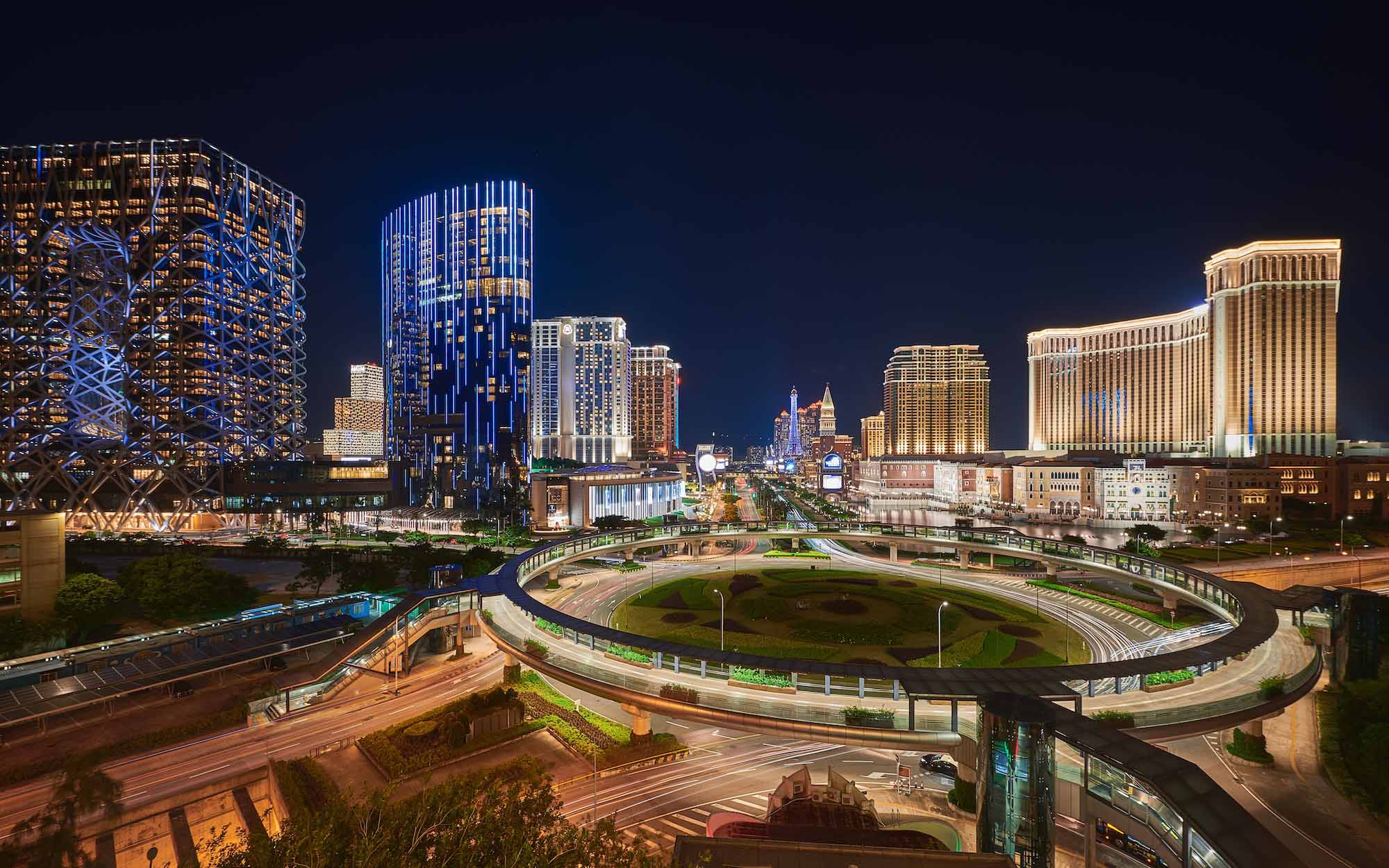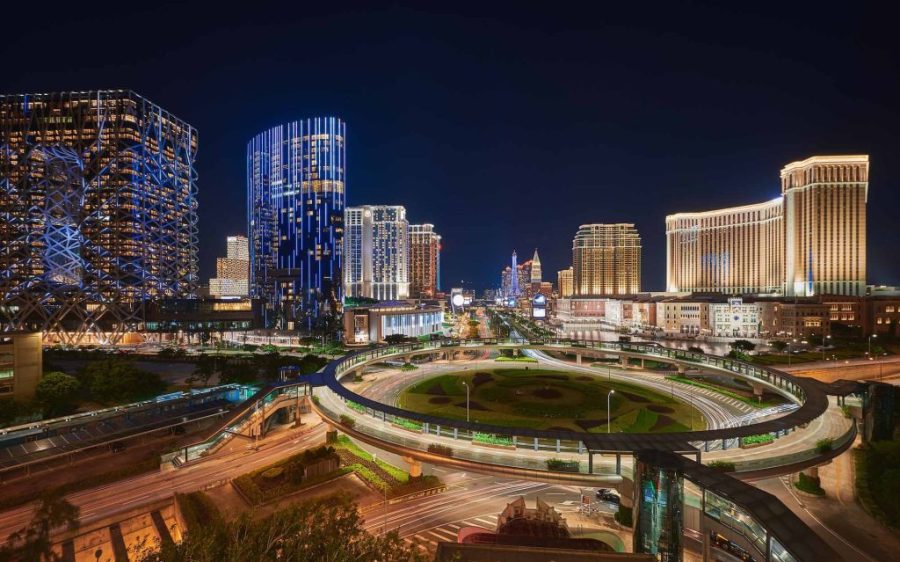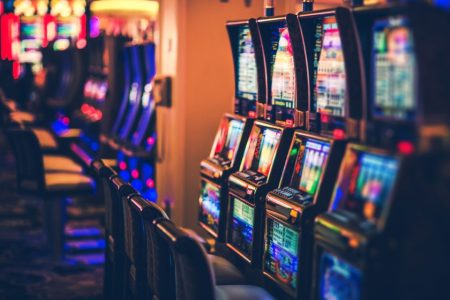Imagine a local transport system that did not run on fossil fuel and was free for tens of thousands of users. It would relieve road congestion with a tiny fraction of the time and money required to build a train network. Once constructed, the system would greatly improve the visitor experience.
I’m talking about a network of elevated pedestrian walkways with travelators, like those in most modern airports. Macao, in particular Cotai, needs them badly.
As we know, over the coming decade the city’s concessionaires are going to be investing an awful lot of money – 130 billion patacas (US$16.1 billion) to be precise – on leisure and cultural infrastructure unrelated to gaming. But while new attractions may help diversify Macao’s travel industry, they won’t make a difference if visitors still struggle to get around the city. After all, the easier it is to explore Macao, the more time visitors spend dining, shopping, attending shows and at the casinos.
[See more: How would you spend a trillion patacas?]
I’ve already written about how we can improve the taxi experience for visitors. It’s also high time we made the city more walkable, starting with more elevated pedestrian bridges linking Cotai’s major integrated resorts.
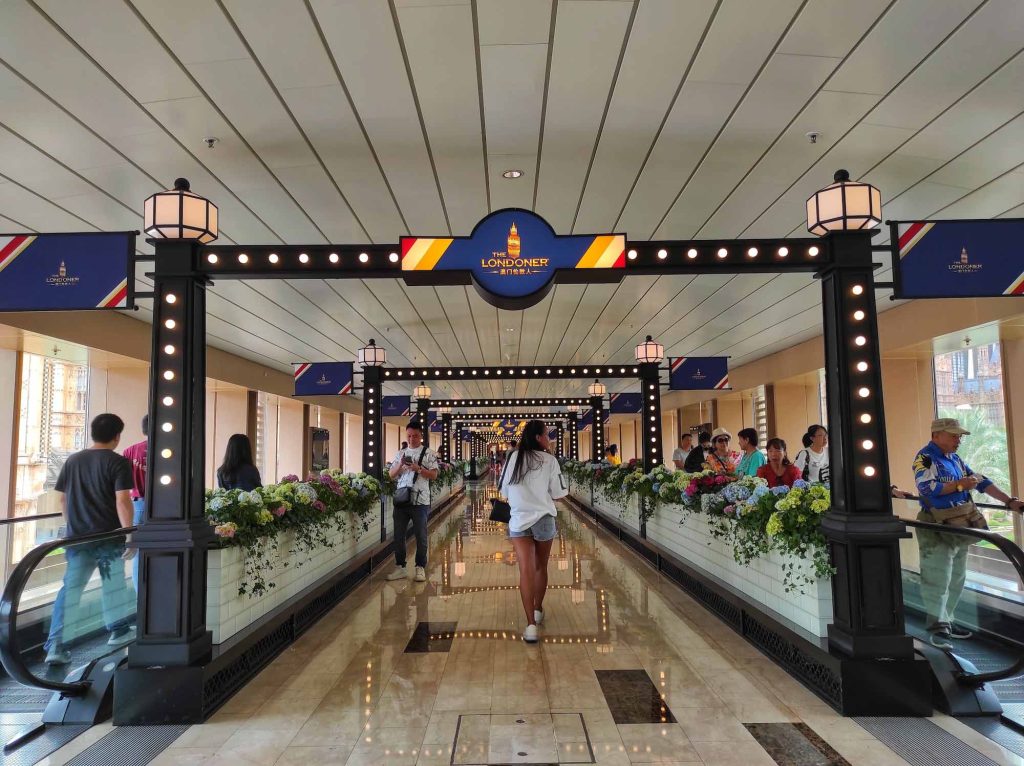
Connecting competing resorts
Anyone who is familiar with Sands China’s properties in Cotai will immediately understand the benefits such walkways bring. The casino operator has built a bridge to connect its three properties on the west side of the Cotai Strip – the Venetian, Four Seasons, and the Parisian – to a fourth on the east side, the Londoner (previously Sands Cotai Central). The walkway enables visitors to cross directly between the properties quickly and easily in a comfortable, air-conditioned environment.
Before the bridge existed, getting from the Venetian to what’s now the Londoner required visitors to schlepp 10 to 15 minutes out of their way across busy Estrada do Istmo. This included getting out of the property, going to the nearest crosswalk, waiting for two “walk” signals to flash, heading toward Londoner, and once inside, finally walking between 50 to 100 metres towards the centre of the integrated resort.
It looks close on the map, but this can be an uncomfortable trudge in summer, when temperatures are 30℃ or above and the sun beats down mercilessly.
While walking between Sands China properties is now a breeze, it’s still a headache for visitors to find their way on foot between neighbouring integrated resorts – say, from the Parisian to Studio City, or City of Dreams to MGM Cotai.
[See more: This is the one thing Macao must do if it wants to diversify away from gaming]
To be sure, there are other hotel walkways in the city: between Four Seasons and the Londoner; from Galaxy Macau to Broadway Macau; and one connecting the Grand Lisboa to the Hotel Lisboa. These are between properties that share the same owner, however. I’m talking about a network of connecting walkways between competing properties. It is one of the easiest things that can be done to improve Cotai and the government should encourage the resort operators to build them, given its role to ensure the ease and comfort of all visitors.
Government intervention is required since one or both companies on either side of the walkway may not want their competitor to “steal” their customers. This attitude is precisely why today’s visitors are inconvenienced – and thereby discouraged – from visiting neighbouring integrated resorts.
What would Cotai look like with more pedestrian bridges? Taking existing LRT stations (which already allow visitors to cross the street from above) and my own observation of pedestrian traffic patterns into account, I’ve drawn up a map of the existing walkways and some suggested ones.
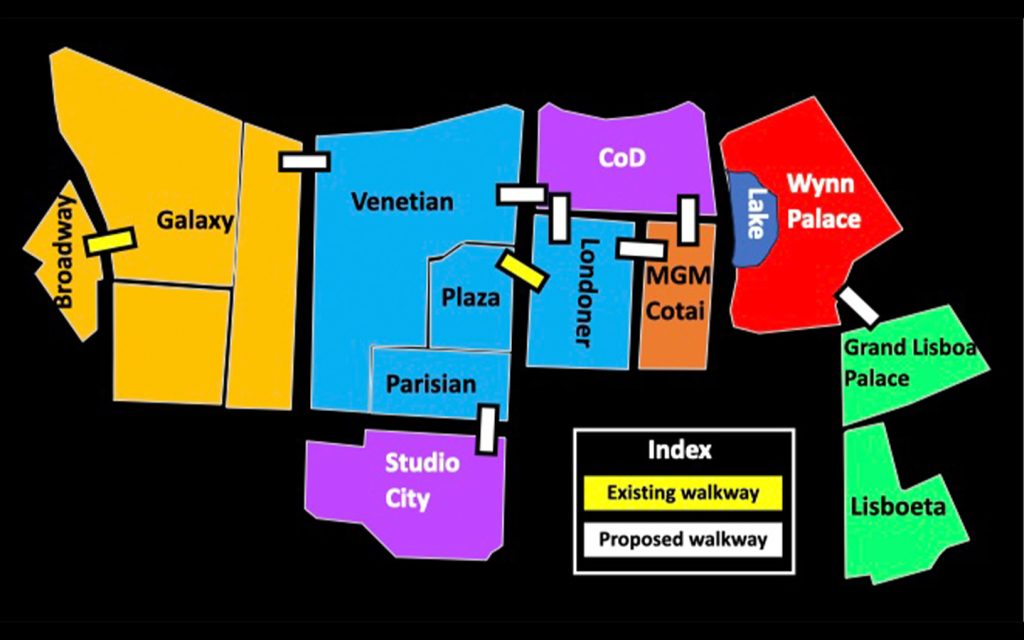
The benefits walkways would bring
In addition to making it easier to explore Cotai, there are many advantages to connecting the integrated resorts. Here are a few major ones.
1. A boost for business.
To paraphrase the quote from the 1989 movie Field of Dreams, if you build it, they will walk it. Multiple studies show that the more walkable an urban area is, the more people tend to get out, explore, and spend money on goods and services. Increased tourism spending has many knock-on effects on the local economy, from creating new jobs and businesses to ultimately enhancing the city’s reputation abroad.
2. Creating more time
Every minute counts. Take the 10 minutes saved by the walkway between the Londoner and Four Seasons, and multiply it by the thousands of users that cross it daily, that’s more time for shopping, dining, seeing shows, and placing bets.
3. Reducing traffic congestion
Estrada do Istmo is among the busiest roads in Macao, often seeing bumper-to-bumper traffic during peak holiday periods. But if pedestrians could use more elevated walkways above the main drag, traffic in the area would be able to flow more efficiently.
[See more: Macao can forget about being an international destination until it fixes its taxi problem]
4. Supporting sustainable tourism development
I’ve witnessed guests waiting 40 minutes for a shuttle bus to go from the Venetian to the Galaxy instead of walking 10 to 15 minutes along Estrada da Baia de Nossa Senhora da Esperança. Either travellers didn’t realise Galaxy is right next door, or it was too hot and unpleasant to walk along a busy main road that offers no shade. By creating a direct, covered link, fewer visitors would feel the need to take a bus such a short distance, which would, in turn, reduce carbon emissions.
5. Creating multipurpose spaces
Walkways don’t have to be boring. They could be designed with attractive features such as art installations, kiosks, small shops and comfortable seating areas, creating an immersive and enjoyable atmosphere for visitors.

In short, not only would visitors be shielded from heavy rains and steamy summer temperatures but, through a proper system of elevated walkways, they would be able to get from Point A to Point B in a pleasurable way that brings benefits for each of the resort operators.
Indeed, for Macao to become an international travel destination, it needs to improve the overall experience for visitors. Walking down major roads while dodging traffic, in 95 percent humidity, is not the memory of Macao we want travellers to take home with them. By investing in a network of pedestrian bridges, the integrated resorts would pave the way for a more tourist-friendly Macao.
